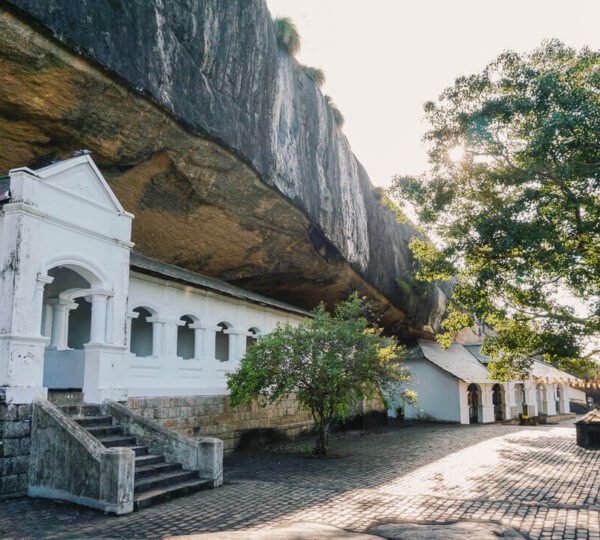Dambulla Cave Temple
- Home
- Dambulla Cave Temple
Dambulla Cave Temple
The Dambulla Cave Temple, also known as the Golden Temple of Dambulla, is a stunning cultural and religious site nestled in the heart of Sri Lanka. Its history stretches back over two millennia, with the temple complex being built during the reign of King Valagamba in the 1st century BCE. Situated atop a massive rock formation, the temple consists of five caves adorned with intricate paintings and over 150 statues, many depicting Lord Buddha. The sheer beauty of the caves, with their vivid murals and serene statues, creates a tranquil atmosphere that captures the essence of Sri Lanka’s ancient spiritual heritage.
Historically, Dambulla holds immense significance as a place of refuge for King Valagamba, who sought shelter in the caves during his exile. Upon regaining his throne, the king transformed the caves into a sacred temple dedicated to Buddhism, commissioning the creation of statues and murals that tell stories of the Buddha’s life and teachings. Over the centuries, the temple has been expanded and renovated by various kings and patrons, further enhancing its artistic and religious value.
The importance of the Dambulla Cave Temple is not only in its religious significance but also in its architectural brilliance. The complex’s use of natural rock formations and its artistic expressions, including the stunning ceiling frescoes that cover nearly 2,100 square meters, highlight the skill of ancient Sri Lankan craftsmen. Today, the Dambulla Cave Temple is a UNESCO World Heritage site and a popular pilgrimage destination, offering visitors a unique glimpse into the spiritual and cultural legacy of Sri Lanka.





